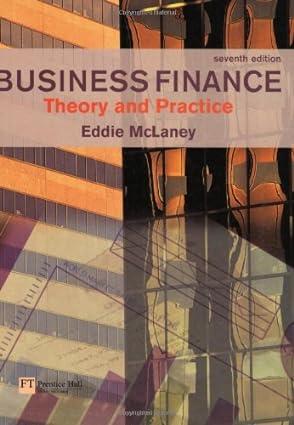Quantitative Problem 1: Assume today is December 31, 2019. Barrington industries expects that its 2020 after-tax operating income [E8IT(1 - T)] wall be s440 milion and its 2020 depreciation expense will be 565 million. Barrington's 2020 gross capital expendatures are expected to be $110 million and the change in ats net operating warking capital for 2020 will be $20 million. The firm's free cash flow is expected to grow at a constant rate of 6% anoually. Assume that its free cash fiow occurs at the end of each vear. The firm's weighted overage cost of capital is 8.3%; the market value of the company's debt is $2.5 billion; and the company has 190 millon shares of common stock outstanding. The firm has no preferred stock on its balance sheet and has no plans to use it for future capital budgeting projects. Aso, the firm has zero non-operating assets. Using the corporate valuation model, what should be the companys stock price today (December 31,2019 )? Do not round intermediate calculations. hound your answer to the nearest cent. \$. per share Quantitative Problem 2t Hadiey tnci forecasts the year-end free cash flowi (in millions) shown below. The weighted average cost of capital is 12%, and the FCFs are expected to continue growing at a 4% rate after Year 5 . The firm has 324 milion of market-value debt, but it has no preferred stock or any other outstanding claims. There are 20 milion shares cutstanding. Also, the firm has zero non-operating assets. What is the value of the stock price today (Year 0)? Round your answer to the nearest cent. Do not round intermediate calculations. 5 per share According to the valuation models developed in this chapter, the value that an iavestor assigns to a share of stock is dependent on the iength of time the investor plans to hold the stock The statement above is Conclusiens Aralyits use both the discounted dividend model and the corporate valuation moder when valuing miture, dividend paying fimsy and they generally use the corporate model when voluing divisions and firms that do not pay dividends. In arimciple, we should find the same intrinsir value using either model, but differences are ohten observed. Even if a compsny is paying steady dividends, much can be leamed from the corporate model: so analysts today uce it for all types of valuations. The process of projecting future. finaneial statements can reveat a great deal about a company's operations and finaneing needs. Aso, such an analysis can proyide in eghts impo actions that might be taken to increase the compary's value; and for this reason, it is integral to the planning and forecasting process







